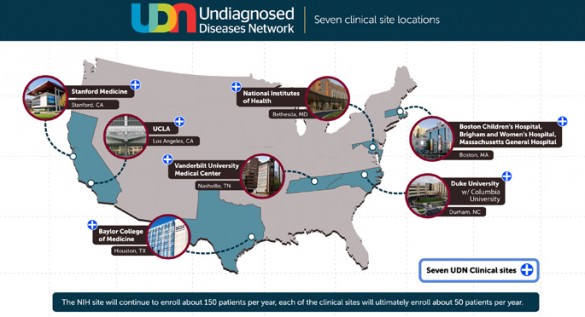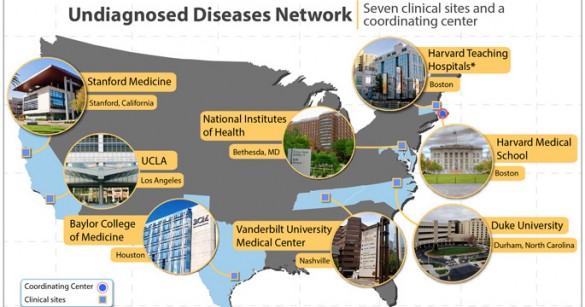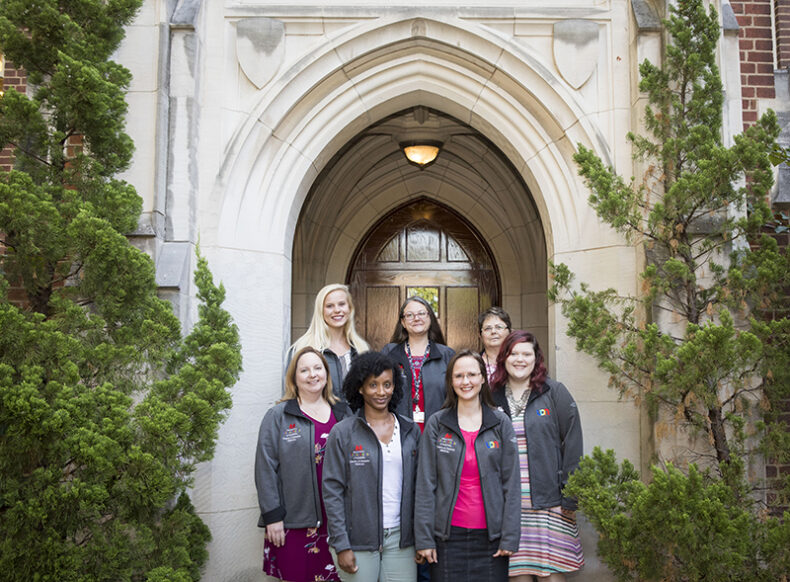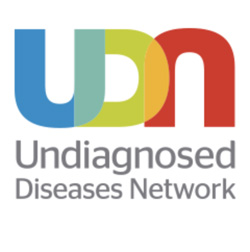
Eighteen-year-old Rachel Barnett of Robertson County is one of the first patients to be enrolled in the Undiagnosed Diseases Network (UDN) at Vanderbilt University Medical Center — one of seven medical centers around the country participating in a clinical research initiative of the National Institutes of Health to identify rare disorders in patients.
Diagnosing diseases isn’t always a quick and easy process, even for the most skilled physician. And for some of the approximately 25-30 million Americans who suffer from a hard-to-solve condition, an answer never comes because the disease is rarely seen, previously undescribed or a rare form of a more common disease.
Baye Barnett, Rachel’s mother, has sought a name for a set of complex physical problems that her daughter, Rachel, has battled since birth — a heart defect, a low blood count that caused anemia, one kidney that doesn’t function, high blood pressure, scoliosis and glaucoma. It seems like each doctor’s visit uncovers a new problem, but no real answers for her puzzled family.
For the past six years hundreds of patients have been evaluated in the Undiagnosed Diseases Program (UDP) at the National Institutes of Health (NIH) in Bethesda, Maryland. They came from nearly every state, the District of Columbia and seven foreign countries.
With the seven centers now accepting patients, the NIH has opened an online patient application portal called the UDN Gateway. The new system streamlines the application process. All applications for the UDN will go through the Gateway, rather than through individual clinical sites in the network.
The Gateway replaces what had previously been a paper-and-mail application process for the NIH Undiagnosed Diseases Program, which is now part of the UDN.
“These are patients with mysteries that we are trying to solve,” said John Phillips III, M.D., David T. Karzon Professor of Pediatrics and director of the Division of Medical Genetics and Genomic Medicine, who is co-principal investigator of the Vanderbilt UDN with John Newman, M.D., Elsa S. Hanigan Professor of Pulmonary Medicine. “The NIH’s goal in this is to discover new diseases,” Phillips said.
“A lot of these people haven’t been diagnosed, not because they don’t have something, but because nobody has seen what they have before. The demand has outgrown what NIH can offer, and there’s the convenience issue — patients have to come from California to Bethesda. This network of clinical sites will serve that same role, but will be more geographically dispersed.”
Phillips said each clinical site in the UDN will offer studies that go beyond what is routinely done, such as whole exome sequencing (sequencing all genes).
Newman said Vanderbilt was an ideal choice because of its structure and strengths in bioinformatics, its BioVU program (Vanderbilt’s bank of de-identified DNA samples), the REDCap (Research Electronic Data Capture) developed at Vanderbilt, and the Clinical Research Center where patients will be seen.
“We’re very well positioned for this kind of work at Vanderbilt. This is what we do,” he said.
The six clinical sites (excluding the NIH program) in the Undiagnosed Diseases Network (UDN) will receive $43 million over four years and will contribute local medical expertise and conduct clinical evaluation and scientific investigation in cases that involve patients with prolonged undiagnosed conditions.
The Vanderbilt UDN clinical site will have emphases on heritable lung diseases in adults and children, heritable and other heart problems including pharmacogenetics, arrhythmias and autonomic disorders in adults, and metabolic and other genetic problems in children.
The other clinical sites are:
• The NIH Undiagnosed Diseases Program;
• Baylor College of Medicine, Houston;
• Duke Medical Center, Durham, North Carolina, with Columbia University, New York City;
• Harvard Teaching Hospitals (Brigham and Women’s Hospital, Boston Children’s Hospital, Massachusetts General Hospital), Boston;
• Stanford Medical Center, Stanford, California; and
• University of California at Los Angeles Medical Center
Since its 2008 launch, the UDP has reviewed more than 3,100 applications from patients around the world. More than 800 patients have been enrolled for a one-week evaluation.
While approximately 25 percent of those have received some level of clinical, molecular or biochemical diagnosis, many patients remain undiagnosed.
By including an additional six clinical sites, the UDN will both draw upon the unique expertise of new clinical research groups and cultivate opportunities for collaboration among a larger group of expert laboratory and clinical investigators. Physicians within the network will collect and share data. They will also benefit from common protocols designed to improve the level of diagnosis and care for patients with undiagnosed diseases.
By the summer of 2017, each new clinical site will accept about 50 patients per year. The network has also brought on board two DNA sequencing facilities.
One is at the Baylor College of Medicine, and the other is at the HudsonAlpha Institute for Biotechnology in Huntsville, Alabama, with Illumina in San Diego.
Baye Barnett said she is hoping to finally be able to put a name with Rachel’s disease.
The teenager was initially diagnosed with Diamond-Blackfan anemia, a disorder of the bone marrow, but that was later ruled out by her medical team at Vanderbilt.
“It seems like something new turns up every time we take her to the doctor,” Barnett said. “We’ve just decided this is just Rachel. Every time we bring her to the doctor, we leave thinking ‘maybe this is it.’ But we may have to accept that we may not ever know.”
For access to the UDN Gateway, go to apply.undiagnosed.hms.harvard.edu.
For more information about the UDN, including related funding announcements, visit http://commonfund.nih.gov/Diseases/index.
The UDN is supported by NIH grant U01 HG007674.















